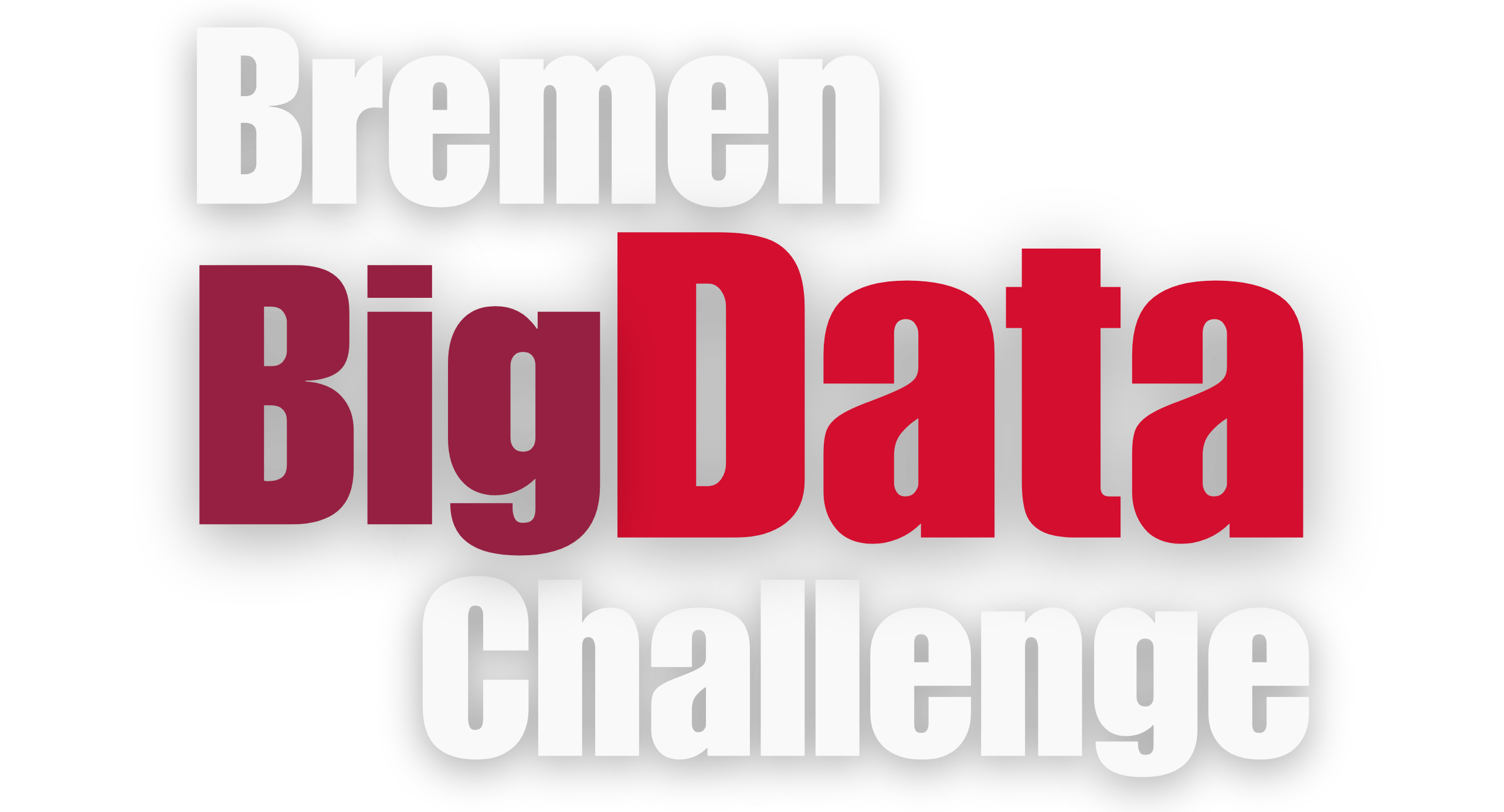
BBDC Basic:
Come by & experience big data!
The Basic Track is aimed at high school students. In the data analysis competition of the Cognitive Systems Lab (CSL) and Center for Applied Space Technology and Microgravity (ZARM) the University of Bremen participants compete for prize money 2.000 Euro and attractive prizes.
Main person in charge
ZARM-Track
Technicher Unterstützer
Text polish
Supervisor
Finanzieller Unterstützer
Hui Liu (hui.liu@uni-bremen.de)
Ina Barwich und Benny Rievers
Yale Hartmann, Marvin Borsdorf und Dashanka de Silva
Elisa Brauße
Tanja Schultz and Heinz Brandt
Gallery: BBDC and BBDC Basic



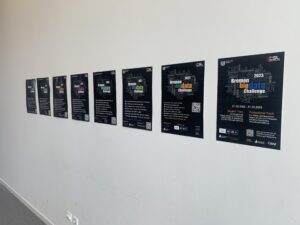
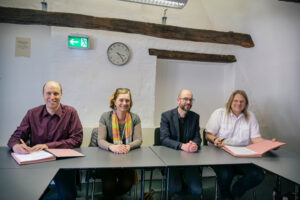
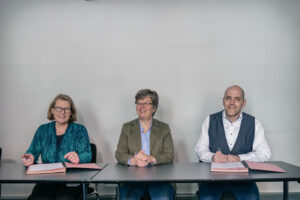

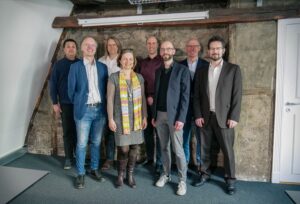
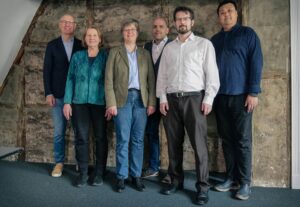
Leaderboard: BBDC Basic CSL-Track
Leaderboard: BBDC Basic ZARM-Track
The ZARM challenge deals with the topic of exploration on foreign celestial bodies such as Mars; so, how do I explore a planet? You have to collect information, for example, about the environment in order to be able to navigate safely through the still unknown surface. This is exactly the same as with real space missions. To work on the ZARM challenge, all groups will receive a Lego construction kit of the Spike Prime series. From this they build a rover and program it so that it can drive down and map a map with four obstacles. The goal is that even someone who has never seen the map knows what obstacles stand where and how to move around them. In addition to the programming code, the technical approach is also evaluated by the team of experts - consisting of scientists and teachers. The school teams have until the end of December 2023 to solve their challenge as well and creatively as possible.
For the ZARM challenge, you will deal with the topics of cartography and programming. To do this, work on the tasks and follow the checklist to successfully complete all steps.
1) Build a robot that is able to independently drive a surface to be mapped for collection. What does the rover have to see? How does he move?
2) Program this robot so that it is able to record data from its environment. What does the robot need for data? How do I get this data?
3) Create a visualization of the surface from the data of the robot. What can such a visualization look like? Does someone understand the map who doesn't know the original environment? The map contains all relevant information for someone who wants to navigate the corresponding area later on the basis of this map (over land or, if necessary, in overflight).
Note:
The map specifies where the objects should be placed and also how the robot must be placed (orientation on the start button). Before starting, make sure that everything is correct here.
Which programs you should use for evaluation and visualization can be found in the checklist.
Place
1
2
3
>3
Group
Larry's Pitstop Crew
VMO
Die Kleisers
Solo? / Bob / Pi-raten / Kein Namensabgabe
Privacy Policy (CSL Track)
All personal data collected in the context of the competition (name, e-mail address and university or employers of the participants as well as IP addresses), are only processed and stored within the University of Bremen and only for the purposes of the competition. The names of the winners of the competition will be published with approval.
Conditions of participation (CSL track)
The BBDC Basic is once again divided into two tracks: CSL and ZARM. BBDC Basic is only open to participants from the seven Bremen high schools who are participating in the "Nachwuchsförderung Bremer Wertpapierbörse"(Promotion of young talent Bremen Stock Exchange) project this year. We may also receive uploads of results from other sources, but we will not include them in the final ranking or award prizes to them. Likewise, a violation of the conditions of participation leads to the exclusion of the team from the competition.
Teams with up to 3 members may participate in the competition (hereinafter the term "team" also refers to individuals); each person may only participate in one team. All participants must agree to the confidentiality agreement regarding the data provided. The consent is given during the registration for the competition by check mark and stored digitally.
Exchange of ideas and cooperation between teams is allowed and desired. It is also permitted to use related data sources, but any use of the exact solution data (data with which the submissions are evaluated), regardless of whether it is received or used, is prohibited.
We reserve the right to only accept solutions that can be fully traced for examination. In addition to the actual program, this also includes the libraries used and the additional data sources that have been used beyond the data provided. Incomprehensible submissions and suspicions of plagiarism are reviewed by an independent jury of experts, which can pronounce an exclusion.
Introduction to the task and data (CSL track)
This year's task is to recognize human movements. Please train your computer to automatically detect the seven most common movements of the human body based on the data of several sensors integrated into a knee brace.
– geradeaus gehen (walk)
– Turn to the left when walking (curve-left)
- Turn to the right when walking (curve-right)
– Sit
- Stand (stand)
- Sit down from standing (stand-to-sit)
- Standing up (sit-to-stand)
The downloaded package consists of three parts:
- a folder called "Training" that contains several files with big data. The file names indicate the meaning of the data contained in the file (walk, curve-left, curve-right, sit, stand, stand-to-sit or sit-to-stand) - in AI we call them labels, annotations, references or basic truths (ground-truth).
- a folder called "Testing" contains a hundred files with the names "000.csv" to "099.csv". They contain the same data format as the files in the "Training" folder. The difference is that they are not labeled. Your task is to give them names - in the AI language we call them predictions, hypotheses or results. You will make the computer automatically give each file a name.
- a simple Python routine that runs in the Jupyter -Notebook environment and helps you to conveniently read, customize, pre-process and visualize data.
Upload and evaluation of the results (CSL track)
Dringendes Update (Ver. 2):
- Um den Teilnehmern mehr Möglichkeiten zur Einreichung zu geben, ist unser Einreichungssystem bis zum 14. Januar 2024 geöffnet. Die Gesamtzahl der Einreichung beträgt 26.
- Gruppen, die ihre Ergebnisse bis zum ursprünglichen Abgabetermin (17.12.2023) einreichen, erhalten bei der Preisverleihung zusätzliche Anerkennung und Auszeichnungen.
- Ergebnisse, die vor oder nach dem 17.12.2023 eingereicht wurden/werden, können zusammen von den teilnehmenden Gymnasien und ihren Lehrenden referenzieren werden.
Each team should register ONE account. After registration, please inform the organizer about your account name via hui.liu@uni-bremen.de (to ensure the fairness of the competition). Each account can be used from 1. November 2023 to 17. December upload results once a week. It should be a TEXT FILE, for example with the name "result.txt", where each line corresponds to a result. For example, this file looks like this:
walk
curve-left
curve-right
…
The file has 100 lines. The above example shows that in the results generated by the computer, 000.csv is assumed as walk, 001.csv is recognized as curve-left, and so on.
A file containing, n (n<100) Zeilen enthält, wird nur für die ersten n Ergebnisse bewertet. Eine Datei, die >100 Zeilen enthält, wird nur für die ersten 100 Ergebnisse bewertet. Zeilen, die keine der sieben Bezeichnungen enthalten, werden als inkorrekt bewertet (z. B. walking oder stehen).
After uploading, an automatic process begins the evaluation by comparing each line with a previously stored basic truth. For example, if 000.csv is actually a walk, a point is added to the result of the example above. There are a total of one hundred testing files, and if they are all correct, you get a score of 0, so 0% error rate. With 25 false detections, the score is 0.25, i.e. 25% error rate. The leaderboard is created after each upload of a new result in the order of highest to lowest error rate and automatically updated.
In addition, load your Source code (e.g. a .ipynb file or a .py-file) up andsend your source code. At the end of the competition to the organizer.
Other things you should know (CSL track)
Although all high school students who participate in this competition have participated in the pre-programming training and have understood all the details required for participation, we still provide some details here.
Sensor types
This time we used a total of 12 sensor channels, in the order:
– EMG-1 (EMG: Electromyography)
– EMG-2
– EMG-3
– EMG-4
– ACC-O-1 (ACC: acceleration; O: thigh)
– ACC-O-2
– ACC-O-3
– Gonio-1 (Gonio: Goniometer)
– ACC-U-1 (U: lower leg)
– ACC-U-2
– ACC-U-3
– Gonio-2
The picture below shows the position of these sensors.
CSV file
Comma-Separated Values. It is essentially still a TXT file (text document) in which the values in each line are separated by commas. You can use any text editor (e.g Notepad, Word, etc.) on any operating system to open the file for viewing, or you can use Excel to open it and display it as a table. Reading the data from the CSV file and saving it in Python parameters already takes care of the associated routine for you.
Sensor data
Since the sampling rate is 1000 Hz, each channel generates 1000 data sampling values every second. To simplify storage and opening, the data of the 12 channels are arranged at a scanning point as horizontal lines in the file, e.g. B. the first two lines of walk_001.csv:
32938,32717,32644,32880,33112, …, 33802,30832
32900,33625,32673,32849,33112, …, 33802,30832
…
This means that at the first sampling the value of EMG-1 is 32938, the value of EMG-2 32717, ..., the value of Gonio-2 30832. After one millisecond, during the second sampling, the value of EMG-1 is 32900, the value of EMG-2 33625, ....
Since we expect more convenient processing of data with artificial intelligence, the routine has helped you transpose such data structures. After transposition, the data of each channel is integrated into the same list.
Sensor diagram (CSL track)
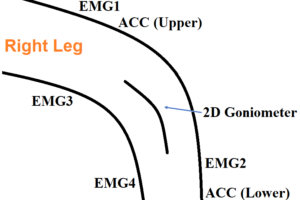
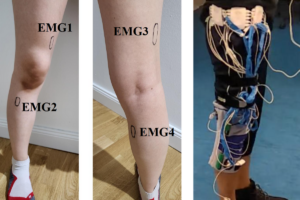
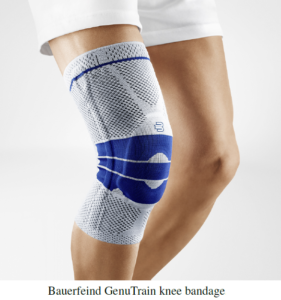
Highlights (ZARM-Track)
„Die Challenge „Exploration auf fremden Himmelskörper“ des ZARM hat uns viele Kopfschmerzen, aber auch viel Spaß bereitet. […] doch sind wir froh über die Dinge die wir in den Letzten Monaten durch diese Challenge mitgenommen und gelernt haben. […] Wir haben jetzt einen kleinen Einblick in eines der möglichen Felder des ZARM bekommen und sind erstaunt wie viel Arbeit hinter einem kleinem LEGO Roboter steckt und wieviel dann wohl hinter einem richtigem Marsroboter stecken könnte. Vielen dank an das ZARM für die Möglichkeit der Teilnahme an dieser Challenge, welche uns die Letzten Monate begleitet hat“
(Team die Kleisers – dritter Platz)
